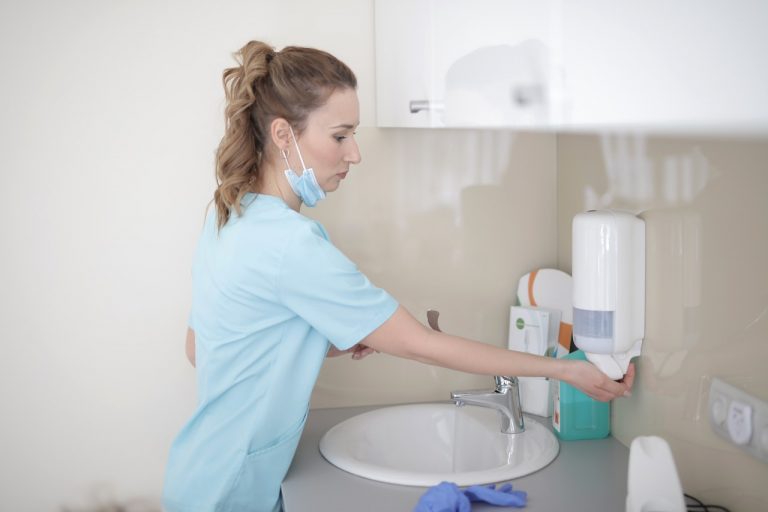The task of a pharmacist throughout the history of modern medicine has consistently been to have a deep understanding of the medications and therapies that have drastically improved the quality of life for millions of people.
The pharmaceutical industry, presently valued at $300 million, continues to grow and expand in research, development, testing, and distribution regions, generating more employment for skilled professionals.
Pharmacy careers in the United States are increasing rapidly, with a predicted enhancement need for pharmacists and pharmacy technicians by 2026. This is largely a result of the rising senior population in the nation, many of whom require medications and increased medical attention as they live longer lives.

Types of Careers for a Pharmacist
These experts are leading the effort to make sure that people receive adequate drug and health-related therapy. Working in tandem with physicians, pharmacists, and the public, you have a huge obligation to guarantee secure pharmacological procedures.
In the Pharmacy field, there are different sub-fields to explore.
- Pharmacy Assistant – In general, a pharmacy assistant needs only a high school diploma and on-the-job training. They also have fewer duties than other pharmacy experts because they have less education and experience.
- Pharmacy Technician – Pharmacy technicians are experts in health care who have received specialized training to help pharmacists. Many countries and employers require Certified Pharmacy Technician (CPhT) credentials from pharmacy techs. In addition, many pharmacy technicians complete a formal education program leading to the degree of a certificate or associate. Usually, you also need to pass background checks and drug screenings.
- Pharmacist – A pharmacist is an advanced expert in a pharmacy. In most countries, in order to guarantee precision, they are needed to verify all prescriptions filled out by pharmacy technicians. They are also accountable for the safety and education of patients.
Average Salary for Different Careers as a Pharmacist
According to Indeed, a Pharmacy Assistant earns an average pay of $15.82 per hour. However, this depends on the employer. According to the U.S. Bureau of Labor Statistics (BLS), pharmacy assistants earn an average annual salary of $29,030. To add to that, a Pharmacy Technician earns at least $33,060 per year.
A pharmacist’s average wage in 2016 was $121,500, although those with advanced positions or years of experience may expect to earn even greater salaries. This also applies to those who practice in various countries.
Where to Find Jobs as a Pharmacist
In this career, you must have a Pharmacy Doctor (Pharm. D.) degree. A lot of learners are entering Pharm. D. Undergraduate programs after only two or three years of research. If you would like to apply for a Pharm. D. Program, seek one accredited by the Pharmacy Education Accreditation Council.
After getting the education and license, you can apply for jobs here.
- Work Abroad – With Work Abroad, you can apply to pharmacy jobs in almost all countries around the world.
- Recruit – Recruit is a job search engine for job positions available in Singapore.
- Work For Good – Work For Good is a leading job search engine for job positions in Qatar and other countries.
- Jobaroo – Jobaroo is a job search engine for job positions available in Australia.
How to Apply for Jobs as a Pharmacist
These professionals have two distinct routes in practice that they can follow to fulfill instructional needs. The first alternative is to complete undergraduate courses before shifting to a graduate program, while the second option is a mixed option that includes all coursework into one program.
Pre-pharmacy classes are provided as two- or four-year degrees, so learners should already have an idea of which graduate program they are going to follow before engaging in an undergraduate program. Four-year degrees include more general education and lessons in liberal arts, while two-year programs focus on field-relevant lessons. Combined degrees are offered in different forms and allow the student to complete all the coursework required in a shorter time frame.
Next, you need to get a license. At the state level, licensing requirements are required, meaning graduates should check with their local board to know about particular demands.
After getting a license, you can apply as a licensed pharmacist in the following fields.
- Retail Pharmacy – Pharmacists, pharmacy techs, and staff are employed by retail pharmacies. This may include autonomous pharmacies, mail-order pharmacies, and pharmacies in grocery stores and drug stores.
- Hospitals – Hospitals hire pharmacy workers to prepare present patients for medication. Pharmacists may consult with doctors and nurses in these settings, prepare injections or IV bags, and ensure the accuracy of the dose of medication.
- Government of Military Offices – For a few distinct purposes, military installations hire pharmacists. A pharmacist employed by a public unit may run community wellness programs that educate individuals on subjects such as high blood pressure or diabetes.
Pharmacists can also apply in research laboratories, clinics, and patient care clinics.
Conclusion
Becoming a pharmacist takes a lot of years of education and practice. However, once you are ready to take the next step, it is one of the most satisfying jobs today. You can work in almost all fields related to science and social work.
Being a pharmacist today helps educate other people about medication. Pharmacists are required to inform patients about these fresh drugs and to guarantee that individuals take them securely. Landing a job as a pharmacist requires love for people and their health. Start your career now!
If you want to land a different type of job in health and sciences, click here for more information.
Also read – How To Start A Pharmacy Business












